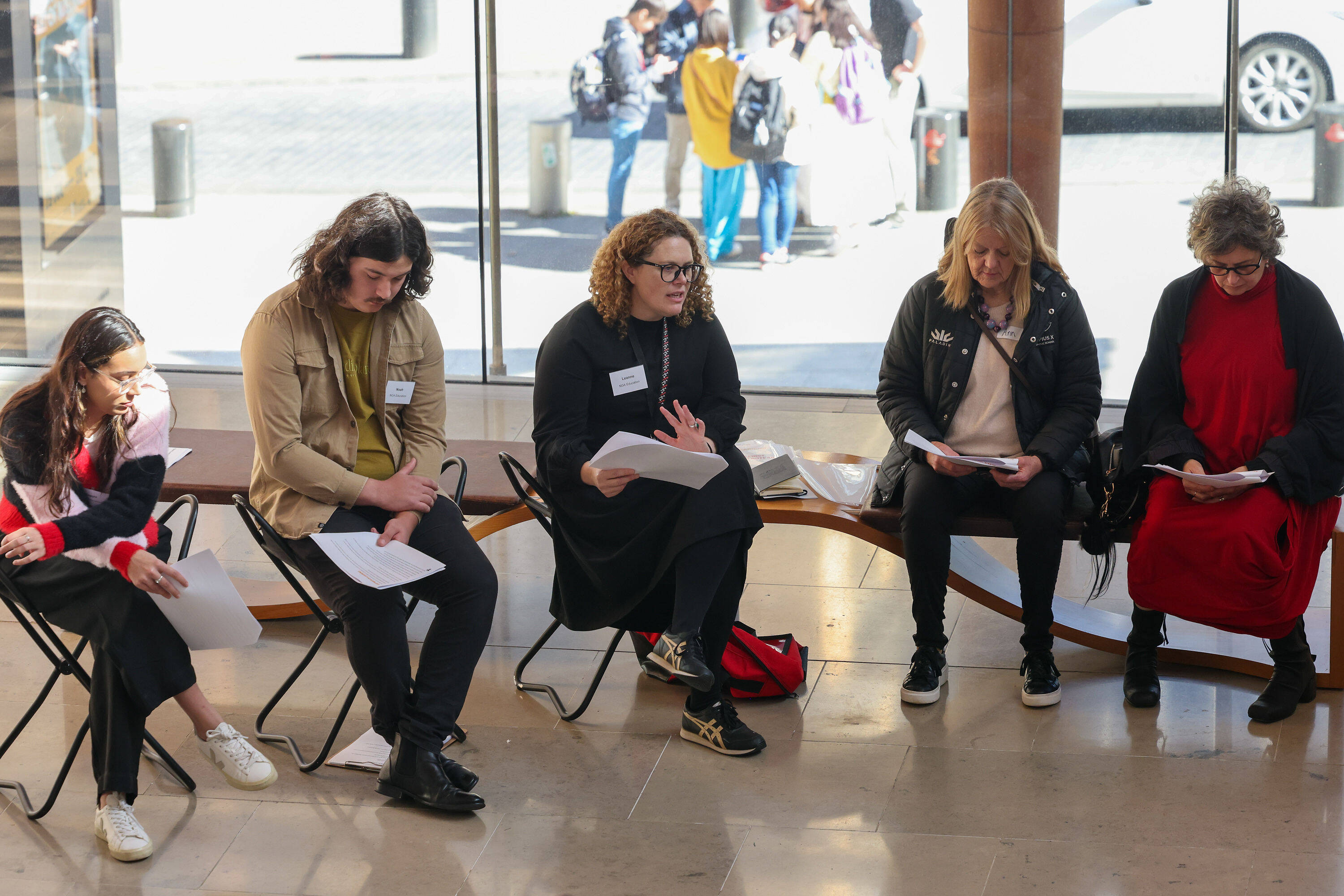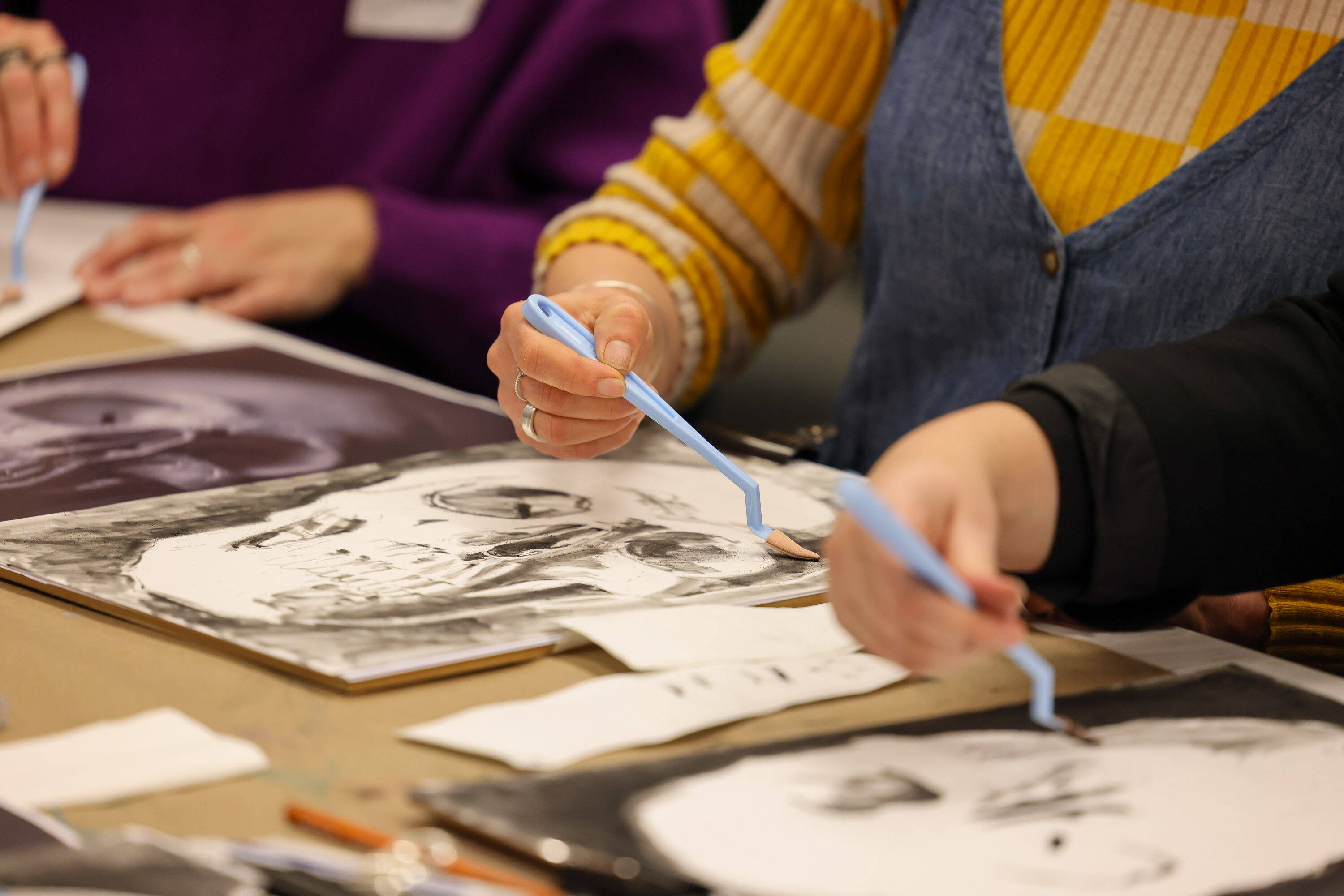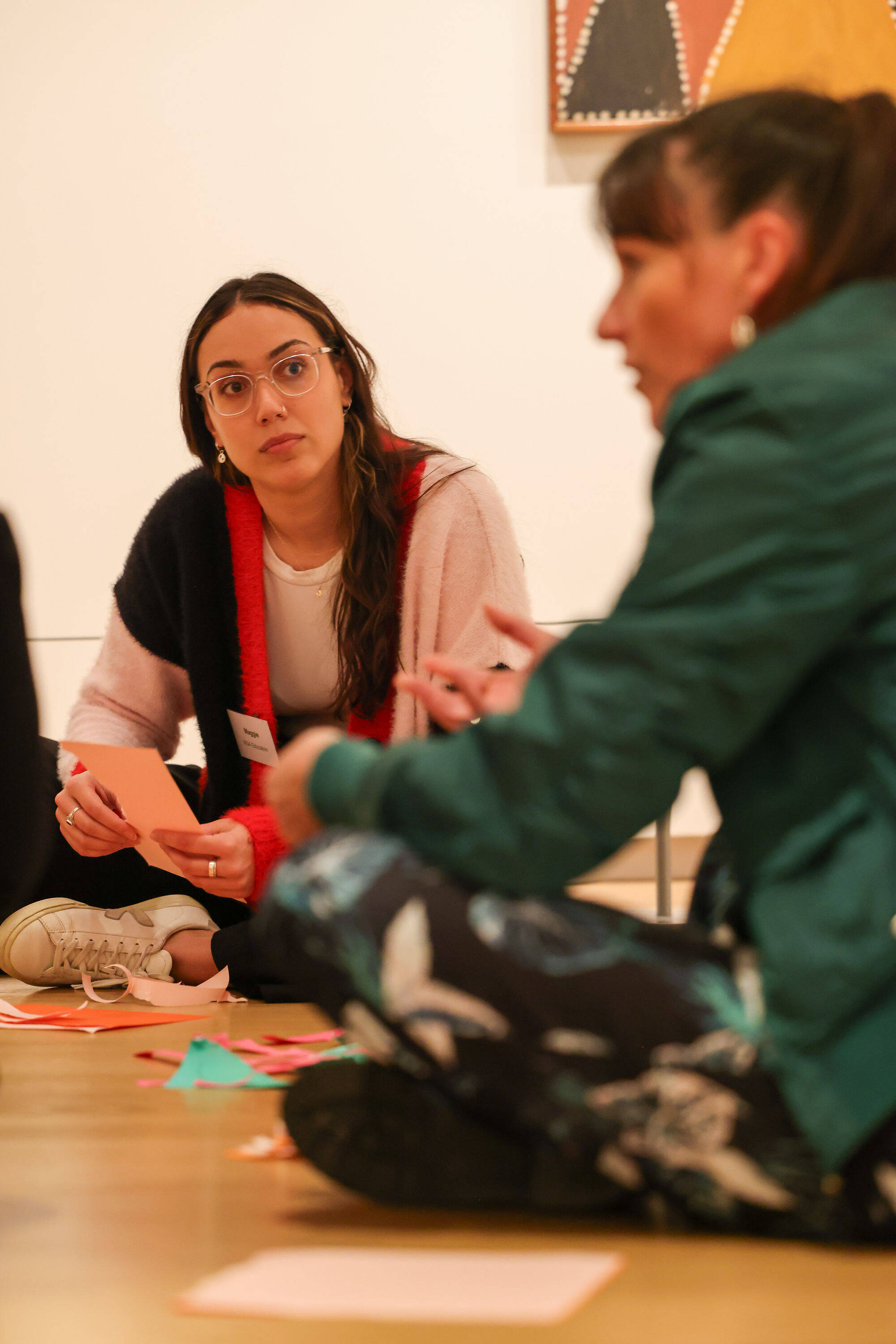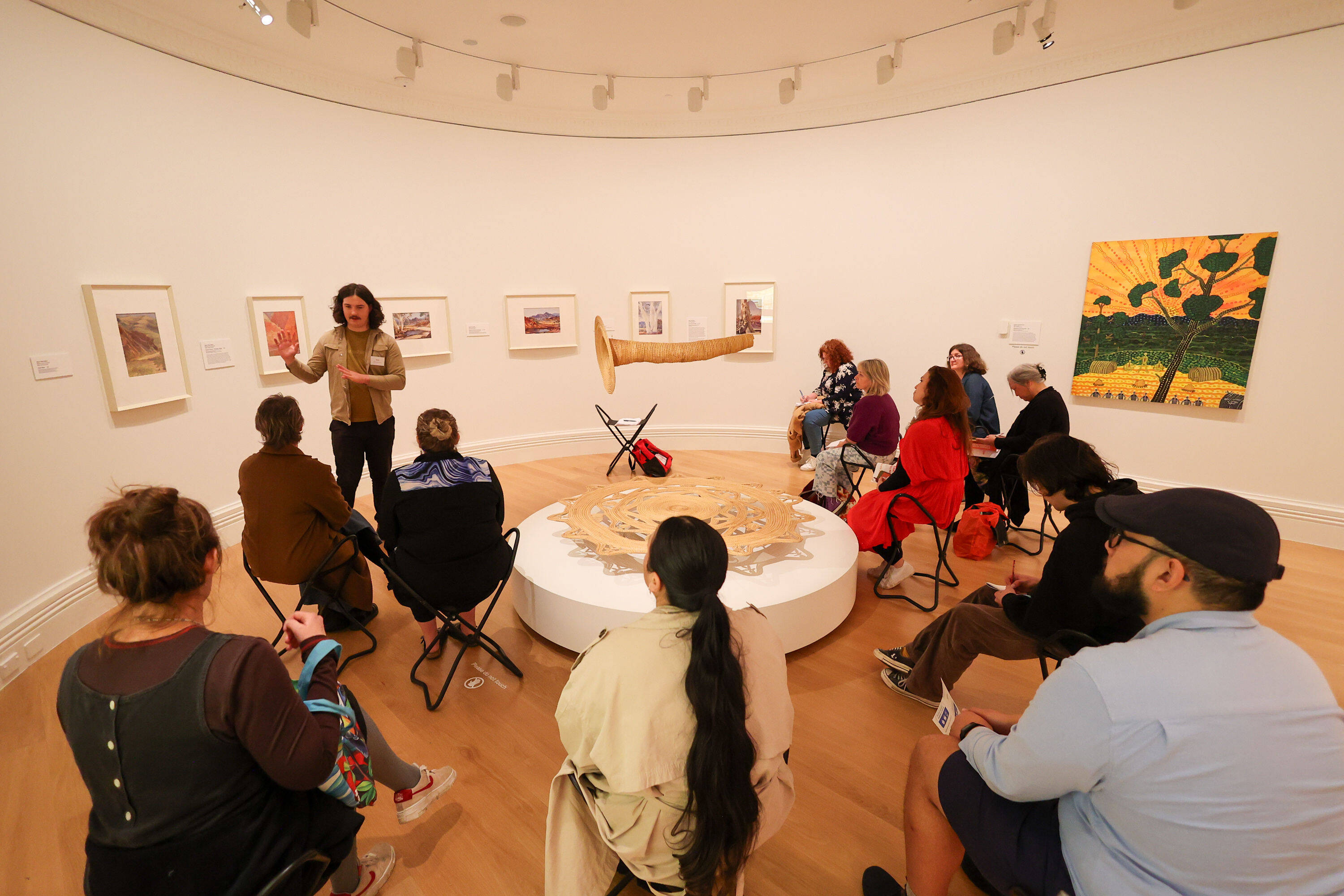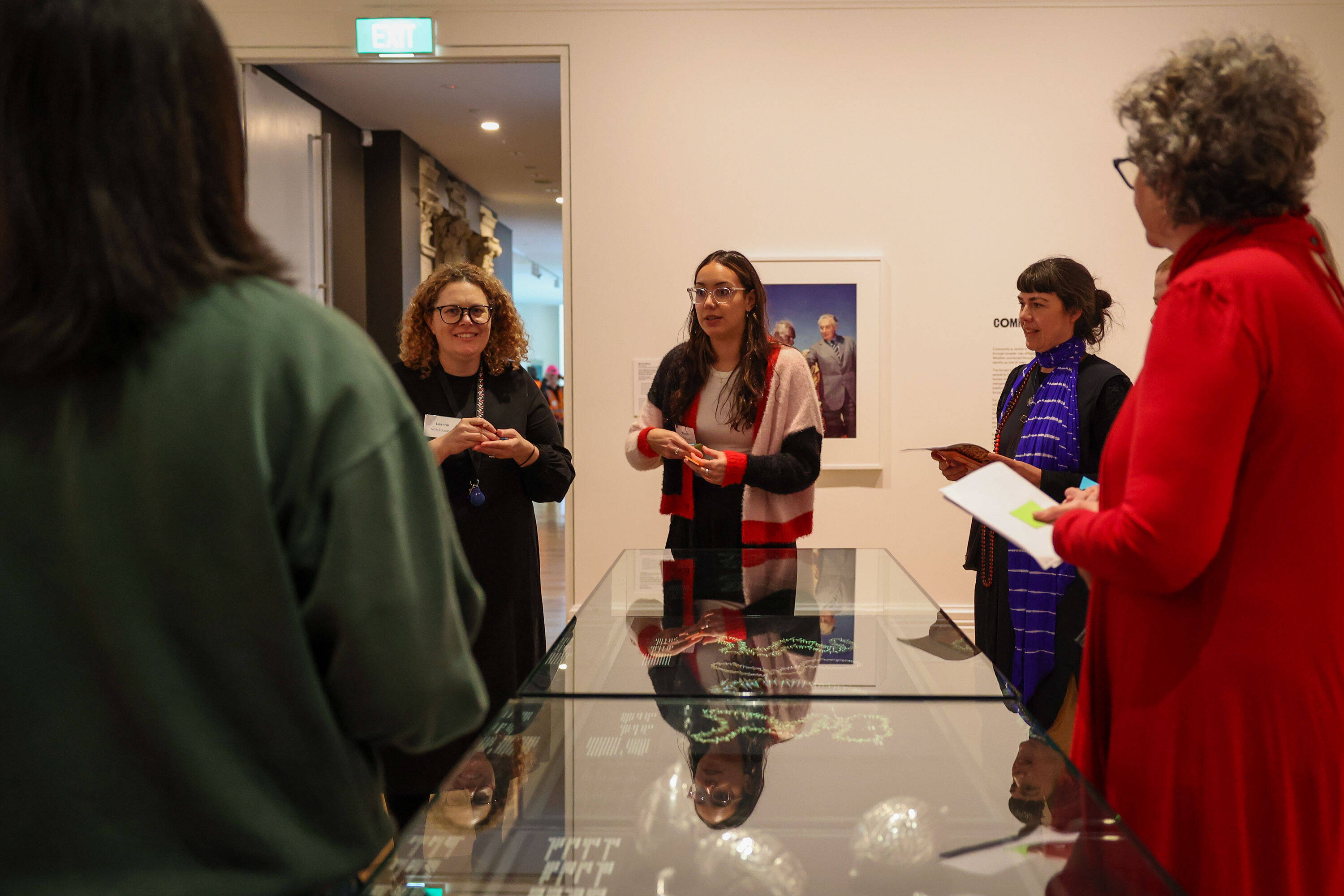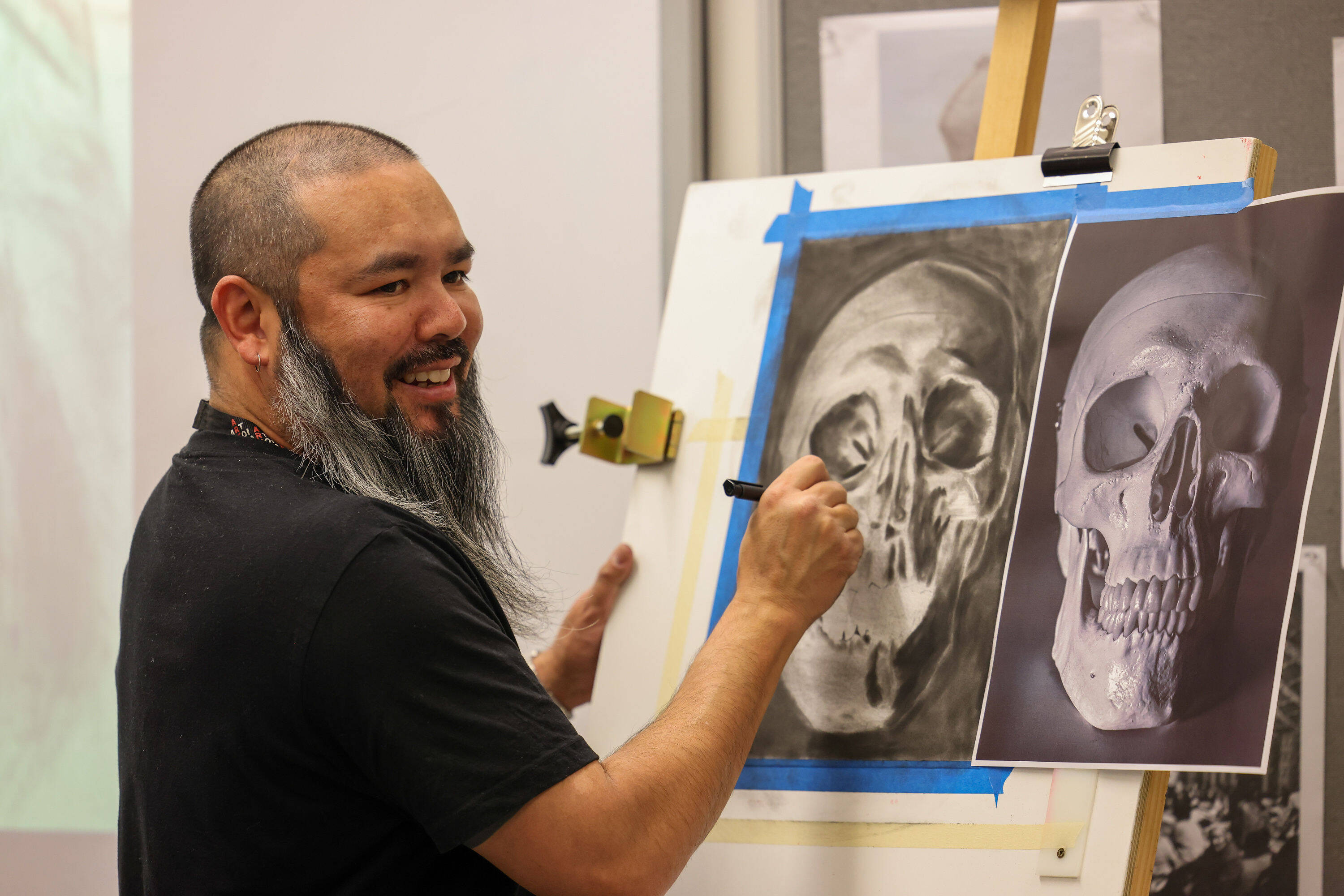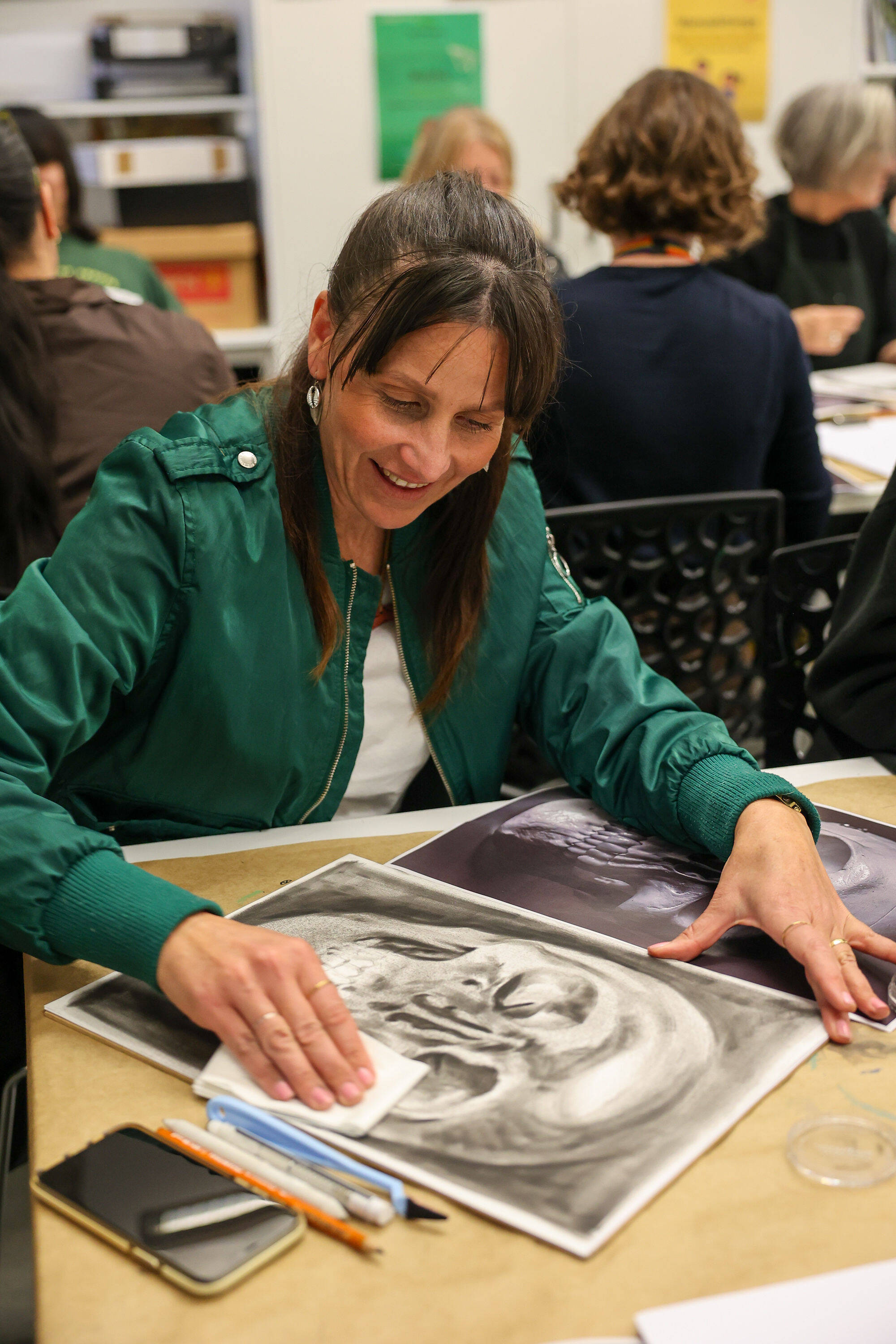Kaiako feedback demonstrated that they fiound the learning day positive and impactful. Many kaiako sent messages with comments such as:
‘Loved the opportunity to create individual and group work.’
‘[It] was great to have an arts perspective on teaching through an Indigenous/First Nations lens. The learning principles were a fantastic insight. Made it really clear how to teach appropriately without cultural appropriation.’
Participants noted the resonance of the Art Ways of Learning programme for teaching here in Aoteoroa, with one kaiako observing:
‘Loved it, very similar to the principles of Te Tiriti o Waitangi: protection, participation and partnership.’
The learning days were full of collaboration, creativity and cultural awareness. These experiences would not have been possible without the help of the talented NGA educators. Working alongside their team, we were able to exchange ideas, stories and shared experiences. Leanne Waterhouse, NGA Education Manager encapsulated it well:
'With our shared colonial past, we look forward to continuing conversations with [the Gallery’s] team into the future and learning how to be better truth tellers and centre the voices of First Nations arts around the world.'
The collaboration between the two galleries encouraged all involved – kaiako, Gallery educators and the NGA team – to grow and expand their knowledge of what it means to be an art educator today.

